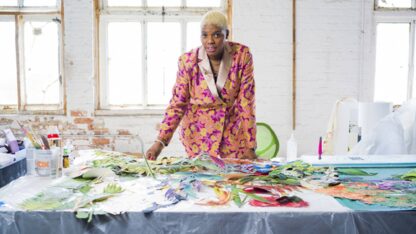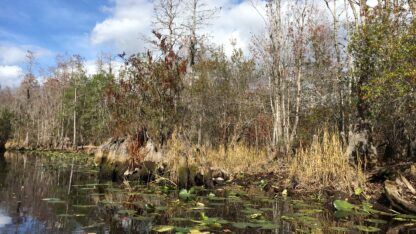Bright monarch butterflies surround five faces of immigrants painted on a mural overlooking the Home Depot Backyard at Mercedes-Benz Stadium.
Yehimi Cambrón Álvarez, the mural artist, looked up at one of the faces– it is molded after her father, inspired by a photo she took of him while she was a student at Agnes Scott College. The painted face stares back at her, showing a calm, solemn look.
“It’s important for me to allow the people in my murals to decide how they want to be depicted,” she said.
Cambrón Álvarez is an artist and educator born in Mexico and raised in Atlanta. An immigrant herself and a DACA recipient, she’s one of a small number of people to receive the Paul & Daisy Soros Fellowship for New Americans.
With it, she will get her master’s degree in print media at the School of the Art Institute in Chicago and use her art to keep telling the complex stories of immigrants.
Cambrón Álvarez has painted many murals highlighting immigrants throughout the metro Atlanta area. The artwork located at Mercedes-Benz was one of several that she called landmarks to the undocumented experience.









